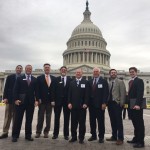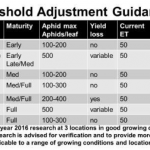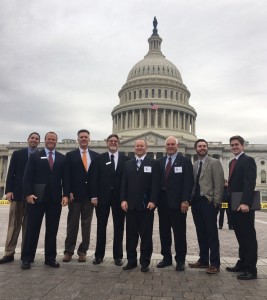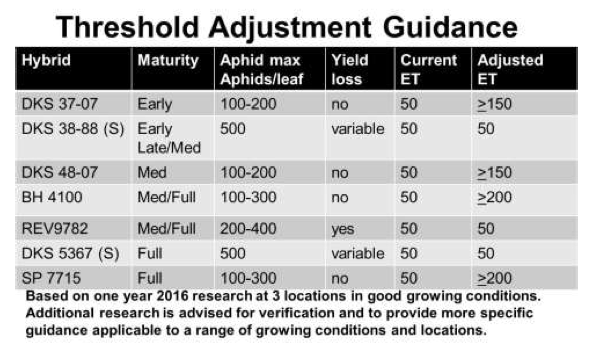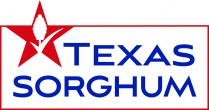TGSA Participates in DC Fly-In—This week, sorghum producers from across the country attended the National Sorghum Producers annual fly-in to Washington D.C. TGSA staff Patrick Wade was joined by Texas Sorghum members Brittan Gruhlkey, Kody Carson, Danny Beyer, and Jason Franz, as well as Texans participating in NSP’s Leadership Sorghum program. Texas sorghum producers met with the Texas’s congressional delegation and their staff to discuss agriculture policies and help our lawmakers better understand the reality of farming in 2017. As Congress prepares to write the next Farm Bill, TGSA members took the opportunity to discuss which elements of crop insurance have been beneficial and where the safety net may have some holes. The Farm Bill was far from the only topic of discussion, though. Continued grievances with EPA regulations, concerns over export market instability, and the need for research dollars to combat the sugarcane aphid were amongst many other issues covered over the three days of meetings. All in all, members of the Texas delegation continue to be staunch advocates of Texas agriculture and TGSA is grateful to have representation in D.C. that keeps its doors open to producers. We look forward to continuing the conversations that were started this week as the 115th Congress progresses.
2016 SCA Research Findings—Sugarcane Aphid on Sorghum in South and Central Texas; research by: Michael Brewer, Research Entomologist (Corpus Christi, all sites coordination) (mbrewer@ag.tamu.edu); Robert Bowling, Extension Entomologist (Corpus Christi/outreach), Mo Way, Research Entomologist (Beaumont), Allen Knutson, Extension Entomologist (Taylor, Hillsboro/outreach), Levi Russell, Extension Ag. Economics, (outreach), Mac Young, Extension Economics Program Specialist (outreach); Stephen Biles, IPM Agent (Port Lavaca/outreach), John Gordy, Ag. County Agent (Rosenberg/outreach)
Commercial hybrids vary in response to aphids and aphid abundance varies as well. Our two questions addressed were 1) whether ‘R’ (referred to as either tolerant or partially resistant) hybrids were verified under season-long growing conditions and exposure to sugarcane aphid experienced in Texas, and 2) whether adjusting thresholds upward for the ‘R’ hybrids is appropriate (that is, they yield better than susceptible ‘S’ hybrid comparators when exposed to natural populations of sugarcane aphid but the ‘R’ hybrid still needs to be protected at some higher sugarcane aphid pressure that may occur in Texas)? At three locations (Corpus Christi, Rosenberg, and Gainesville), resistance in five sorghum hybrids designated by seed companies as “highly tolerant” to sugarcane aphid (SCA) was compared. Suspected ‘R’ (partially resistant) sorghum entries included SP7715 (Sorghum Partners), BH4100 (B&H Genetics), and DKS37-07 and DKS48-07 (Monsanto). Two SCA susceptible hybrids, DKS38-88 and DKS53-67 (Monsanto), also were included in this trial. All hybrids had Concep III (Syngenta) and fungicide seed treatments. To obtain a range of aphid pressure, Sivanto (4 oz/ac) was sprayed by ground rig when aphids reached 50, 125, 300 SCA per leaf. One additional treatment of an unsprayed control allowed aphids to increase naturally. The spray and hybrid treatment combinations were replicated four times. Measurements included weekly aphid counts on 20 leaves total (10 top and 10 bottom leaves). Leaf injury was taken weekly and yield was taken. The peak aphid load was compared across hybrids and a yield—maximum aphid load regression was done. Moderate to high aphid pressure, good growing conditions, and initial aphid infestations occurring before boot stage were experienced in the three locations. Selected ‘R’ hybrids (SP7715, BH4100, DKS37-07 and DKS48-07) maintained aphid densities below 100 aphids per leaf with no leaf injury at Corpus Christi. At Rosenberg where aphid pressure was greatest, BH4100 and SP7715 had peak aphid populations at 300 aphids per leaf, and DKS4807 and DKS3707 had peak aphid populations at 200 aphids per leaf. No yield loss was detected. The two ‘S’ comparators (DKS 5367 and DKS3888) had peak aphid populations as high as 500 aphid per leaf, but little yield decline was detected under the excellent growing conditions in Rosenberg.
Guidance on use of partially resistant hybrids.
Well timed application(s) of an insecticide can protect high yielding aphid susceptible hybrids from economically damaging populations of sugarcane aphid when using an economic threshold of 50 aphids per leaf. Essential in using this strategy is to scout fields for aphids on at least a weekly basis and spray within a few days of exceeding threshold. The scouting card and insecticide use guidelines produced with support from the Board helps guide this effort. For those considering growing commercial ‘tolerant’ hybrids, current season-long research confirms that most but not all of these hybrids express partial protection of plants from sugarcane aphid. With these first year results, we are able to provide initial guidance on adjusting thresholds upward for
these hybrids, under the
good growing
conditions we
experienced in three
locations. For these
hybrids, adjustment of
thresholds to a level at
or above the ET in the
right ‘Adjusted ET’
column was supported. We advise additional
testing at and above
these levels to verify
this work and obtain
more specific values
under a range of
growing conditions
and locations.
*If you would like to review the entire study including planting dates/conditions please email Katelyn Luckett, katelyn@texassorghum.org.
Export Report—Exports continued to strengthen after the holiday break with China, Indonesia, Japan and Mexico committing to purchase 2.3 million bushels of U.S. sorghum. These sales bring total commitments to 128 million bushels or 51 percent of the USDA target, with 33 weeks left in the marketing year. Shipments were also very strong with China, Indonesia, Mexico and Nigeria purchasing 7.9 million bushels. Prices on the Gulf were firm.
